Benin Flag Meaning
A vertical green stripe on the hoist side with horizontal yellow and red stripes on the fly side, representing the forests and hope of the nation, the savannah and mineral wealth, and the courage and blood of the ancestors, using the Pan-African colors that symbolize African unity and liberation.
- Continent
- Africa
- Adopted
- 1990
- Ratio
- 2:3
- Colors
- green, yellow, red
- Designer
- Unknown
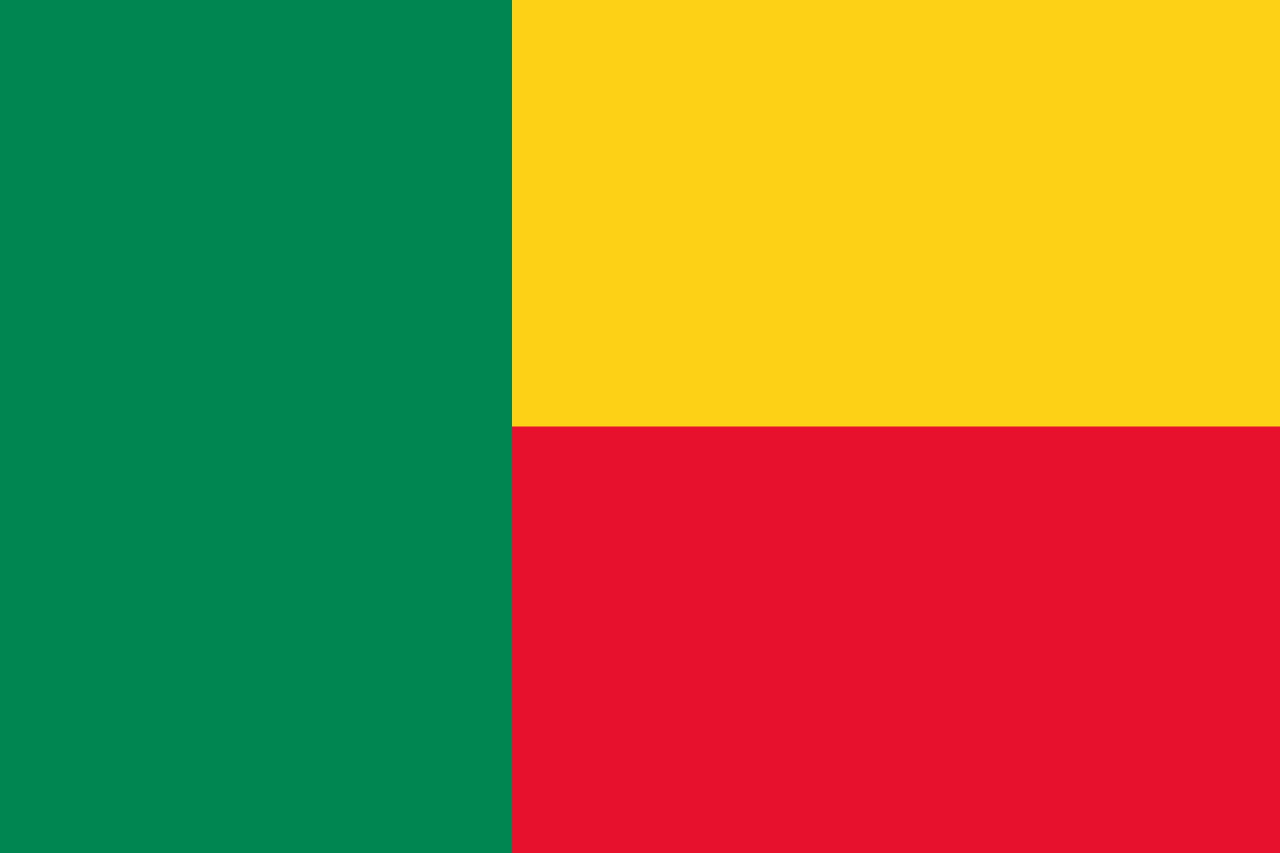
Symbolism
Green Vertical Stripe: Represents the forests of southern Benin, the agricultural wealth of the nation, and hope for the future, symbolizing the natural resources and fertile lands that sustain the population.
Yellow Horizontal Stripe: Represents the savannah of northern Benin and the mineral wealth of the country, symbolizing the golden opportunities for development and the bright future of the Beninese people.
Red Horizontal Stripe: Represents the courage and blood of the ancestors who fought for freedom and independence, symbolizing the bravery of those who resisted colonial rule and the sacrifices made for national sovereignty.
Pan-African Colors: The flag uses the traditional Pan-African colors of green, yellow, and red, connecting Benin to the broader African liberation movement and expressing solidarity with African unity and independence.
History
- 12th-19th Century: The powerful Kingdom of Dahomey dominated the region from the 17th century, becoming wealthy through the Atlantic slave trade and famous for its fearsome female warriors known as the Dahomey Amazons.
- 1600s-1800s: Dahomey became one of West Africa's most militaristic states, controlling the slave trade through the port of Ouidah and developing sophisticated military and administrative systems under kings like Agaja and Ghezo.
- 1890-1894: The Franco-Dahomean Wars saw French colonial forces gradually conquer the kingdom, with the final defeat of King Behanzin in 1894 marking the end of Dahomey's independence.
- 1904-1960: French colonial rule established the colony of French Dahomey, introducing Western education, Christianity, and administrative systems while exploiting palm oil and other agricultural products.
- November 16, 1959: The current flag design was first adopted when French Dahomey gained autonomous status within the French Community, symbolizing the transition toward independence.
- August 1, 1960: Dahomey gained full independence from France under President Hubert Maga, maintaining the flag design as the new nation faced immediate challenges with political instability and ethnic divisions.
- 1960-1972: A period of political chaos saw six successful coups and numerous governments, with regional and ethnic conflicts preventing stable governance in the young nation.
- October 26, 1972: Major Mathieu Kérékou seized power in a coup and gradually transformed Dahomey into a Marxist-Leninist state, changing the flag to feature a green field with a red star in 1975.
- November 30, 1975: The country was renamed the People's Republic of Benin, adopting Marxist-Leninist ideology and implementing socialist economic policies with support from the Soviet Union and Cuba.
- 1989-1990: Economic crisis and the end of the Cold War led to massive protests and strikes, forcing Kérékou to abandon Marxism and accept democratic reforms through a National Conference.
- August 1, 1990: The original flag was readopted as Benin transitioned to multi-party democracy, symbolizing the restoration of the pre-socialist republic and the rejection of the Marxist past.
- 1991: Nicéphore Soglo defeated Kérékou in free elections, making Benin one of the first African countries to achieve a peaceful democratic transition from military rule to civilian government.
- 1996-2006: Kérékou returned to power through democratic elections, serving two terms as a reformed democrat before stepping down constitutionally, establishing Benin as a model of democratic governance in West Africa.
- 2006-Present: Democratic transfers of power have continued with Presidents Boni Yayi and Patrice Talon, though recent years have seen concerns about democratic backsliding and restrictions on opposition parties.
Trivia
- Benin was the birthplace of Vodun (Voodoo) religion, which spread to the Americas through the slave trade and remains an important spiritual practice alongside Christianity and Islam.
- The flag represents the former Kingdom of Dahomey, which was famous for its all-female military regiment known as the Dahomey Amazons, who were among Africa's most feared warriors.
- Benin was one of the first African countries to successfully transition from military dictatorship to stable democracy in the early 1990s, earning it the nickname 'the cradle of democracy in Africa.'
- The country is named after the Bight of Benin, not the historical Benin Empire (in present-day Nigeria), which has caused some geographical confusion.
- Cotonou, the largest city and economic capital, is home to one of West Africa's largest ports and serves as a major commercial hub for landlocked countries like Niger and Burkina Faso.
- French is the official language, but over 50 indigenous languages are spoken, with Fon, Yoruba, and Bariba being the most widely used native languages.
- The flag flies over a country where traditional African religions, Christianity, and Islam coexist peacefully, with many people practicing syncretic forms of religion.
- Benin's economy is heavily dependent on agriculture, particularly cotton production, which employs about 70% of the population and is the main export crop.
- The Door of No Return in Ouidah marks the spot where enslaved Africans were shipped to the Americas, making Benin a pilgrimage site for African diaspora communities.
- Traditional art forms include bronze casting, wood carving, and textile production, with Benin being particularly famous for its colorful appliqué banners and sculptures.
- The country has a young population with over 60% under age 25, reflecting high birth rates and the demographic profile common across West Africa.
- Benin's music scene is vibrant, blending traditional rhythms with modern styles, and has produced internationally acclaimed artists in various genres.
- The flag represents a narrow country that stretches from the Atlantic coast to the Sahel region, creating diverse ecosystems from coastal lagoons to northern savannahs.
- Despite being one of Africa's most stable democracies, Benin remains one of the world's poorest countries, heavily dependent on foreign aid and remittances.
- Education has been a priority since independence, with significant progress in literacy rates, though challenges remain in rural areas and for girls' education.
Related Countries
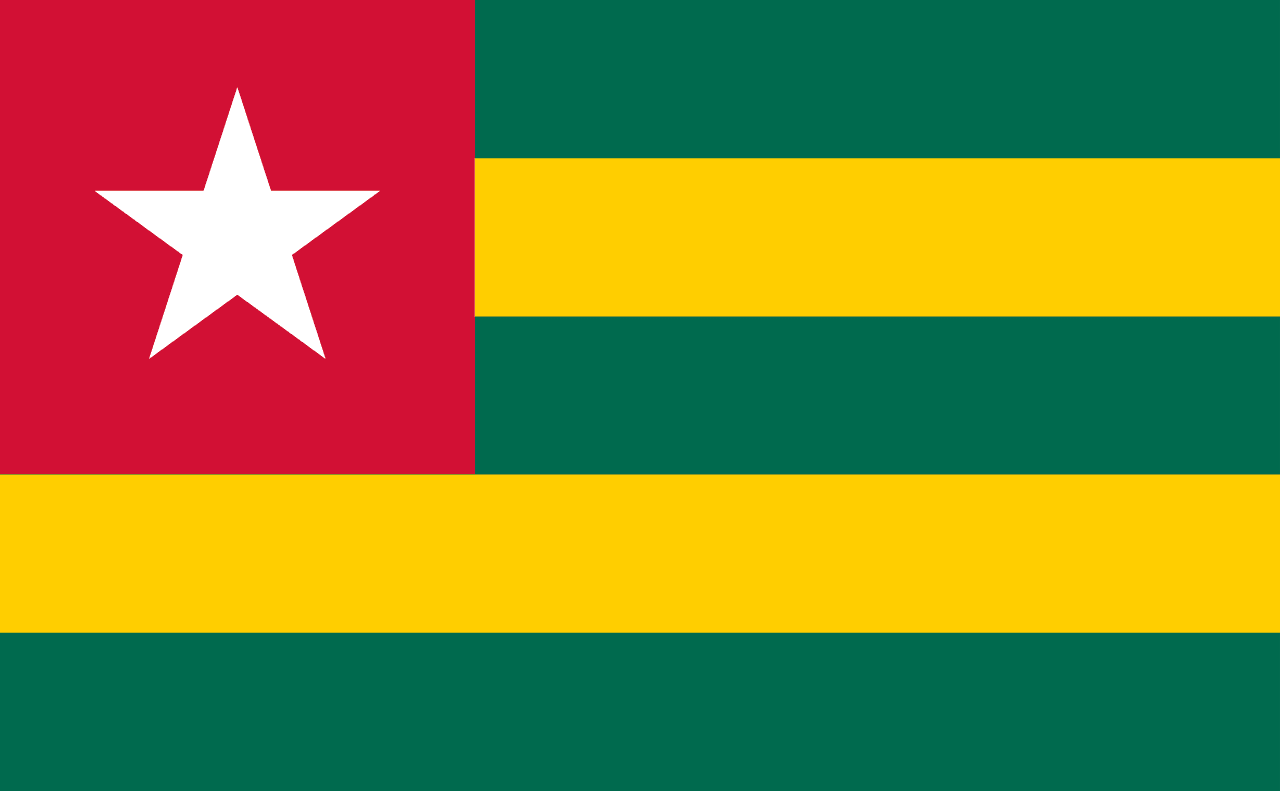
Togo
Africa
Five horizontal stripes alternating green and yellow with a blue canton containing a white five-pointed star, representing the country's forests and agriculture, mineral wealth, the blood shed for independence, hope and purity, and the unity of the Togolese people under one star.

Ghana
Africa
The flag of Ghana and its meaning.
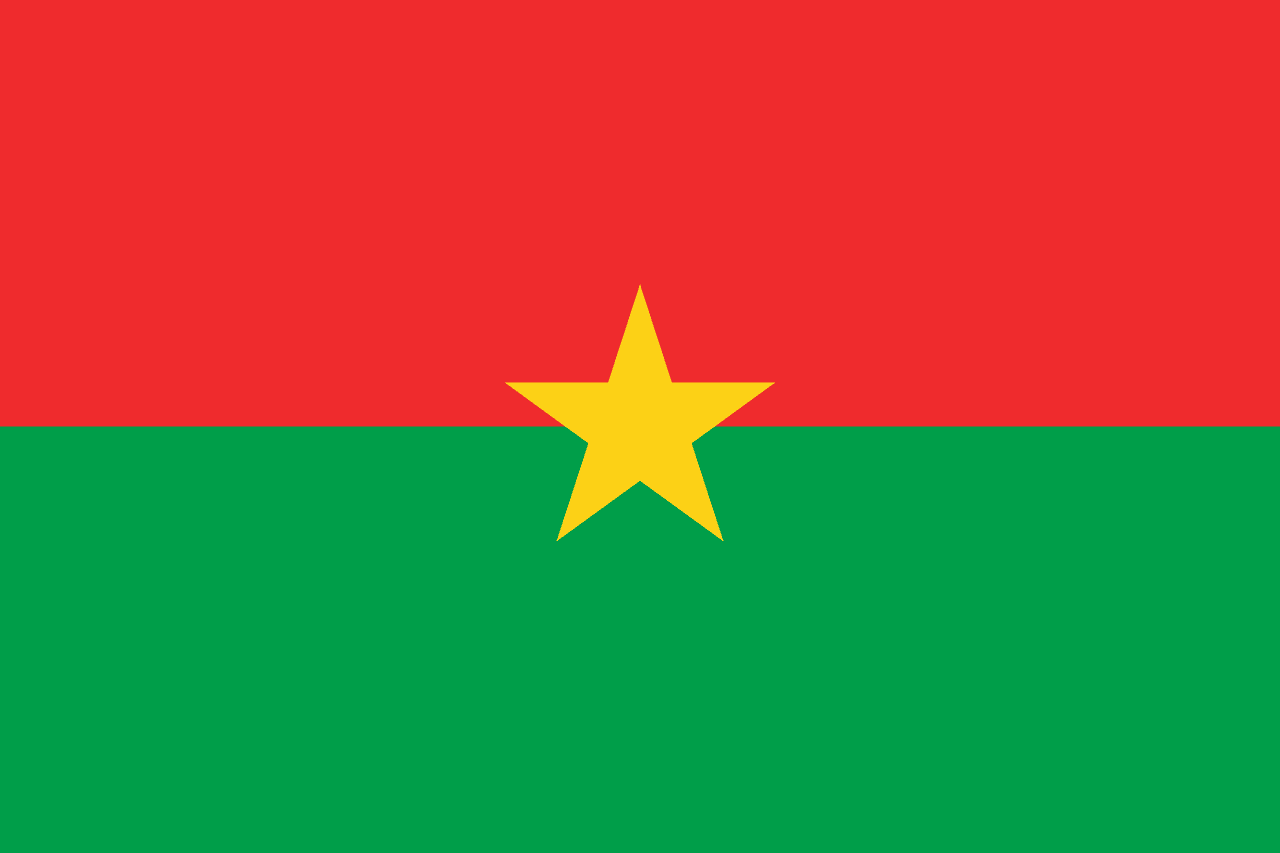
Burkina Faso
Africa
Two horizontal bands of red and green with a yellow five-pointed star in the center, representing the revolutionary ideals, agricultural wealth, and mineral resources of the nation, adopted when the country changed its name from Upper Volta.
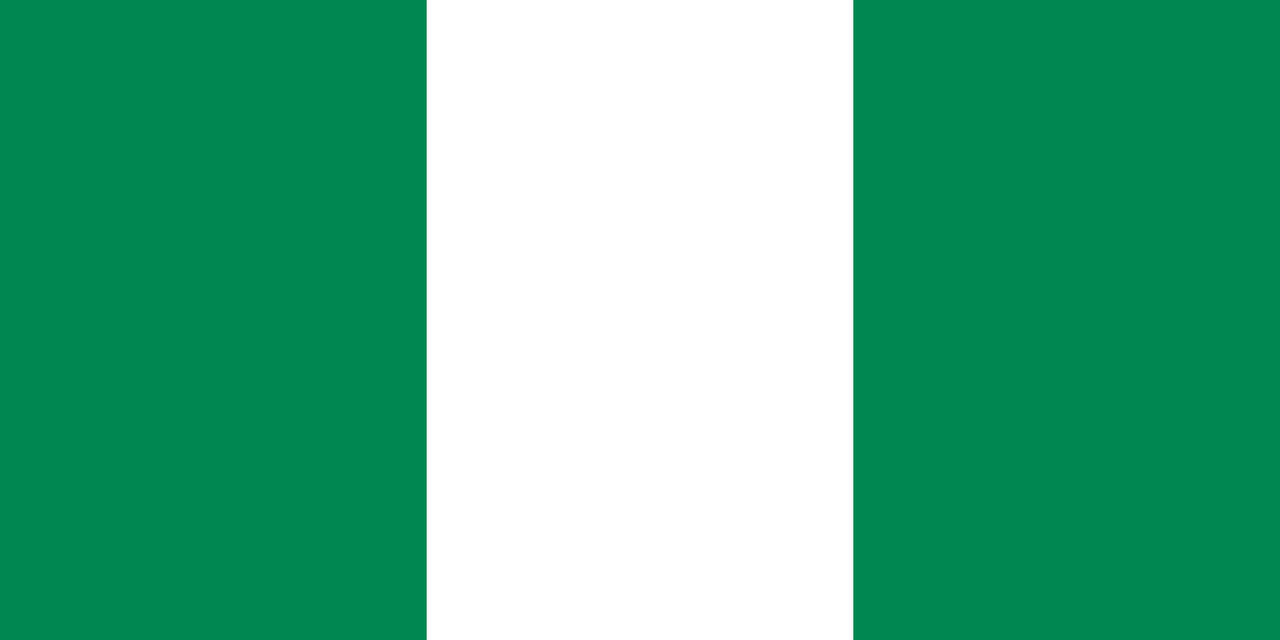
Nigeria
Africa
A vertical tricolor of green, white, and green. The flag was adopted at independence in 1960 and represents agriculture, unity, and peace.
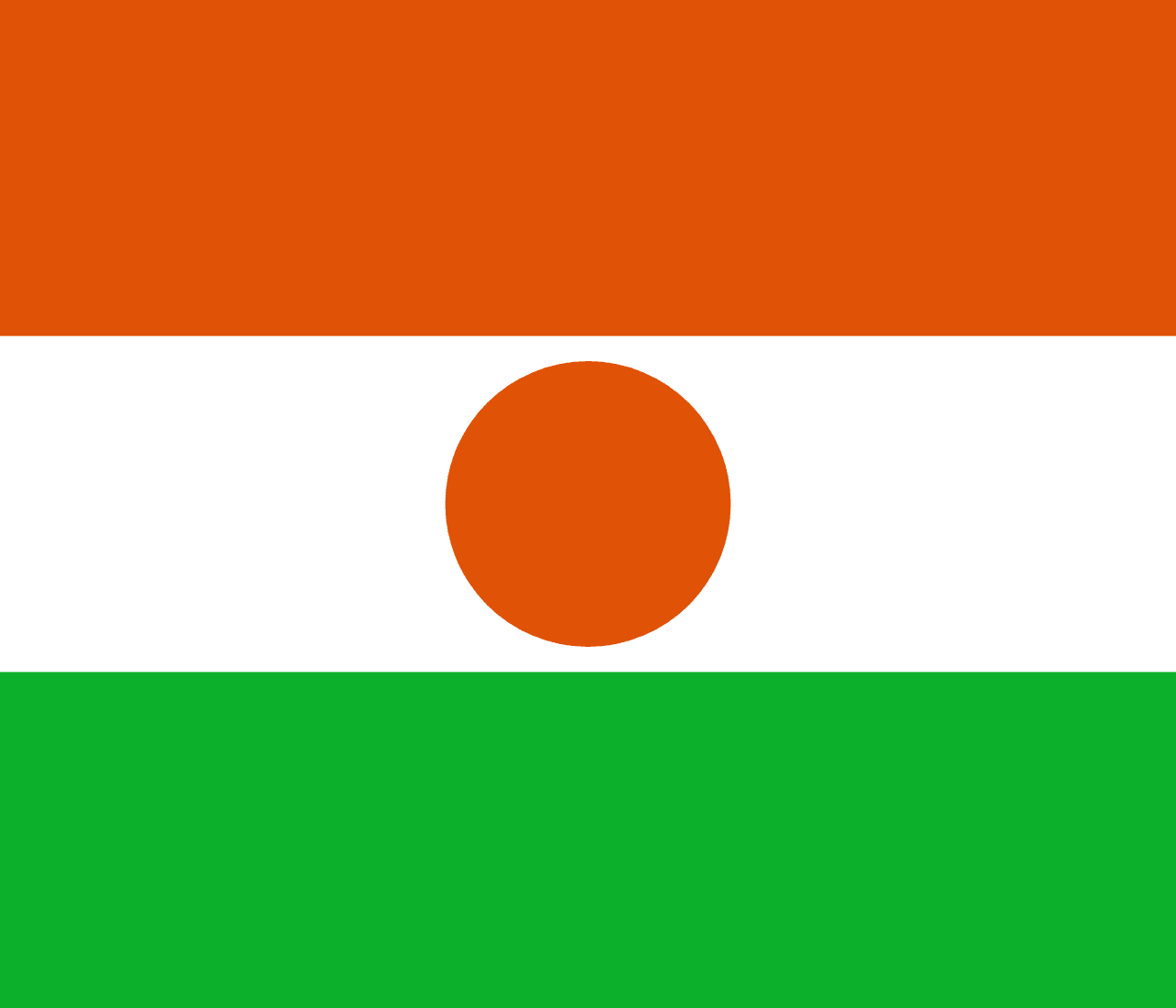
Niger
Africa
Three horizontal stripes of orange, white, and green with an orange circle centered on the white stripe, representing the Sahara Desert, the Niger River, and the fertile south, with the sun symbolizing hope and determination.
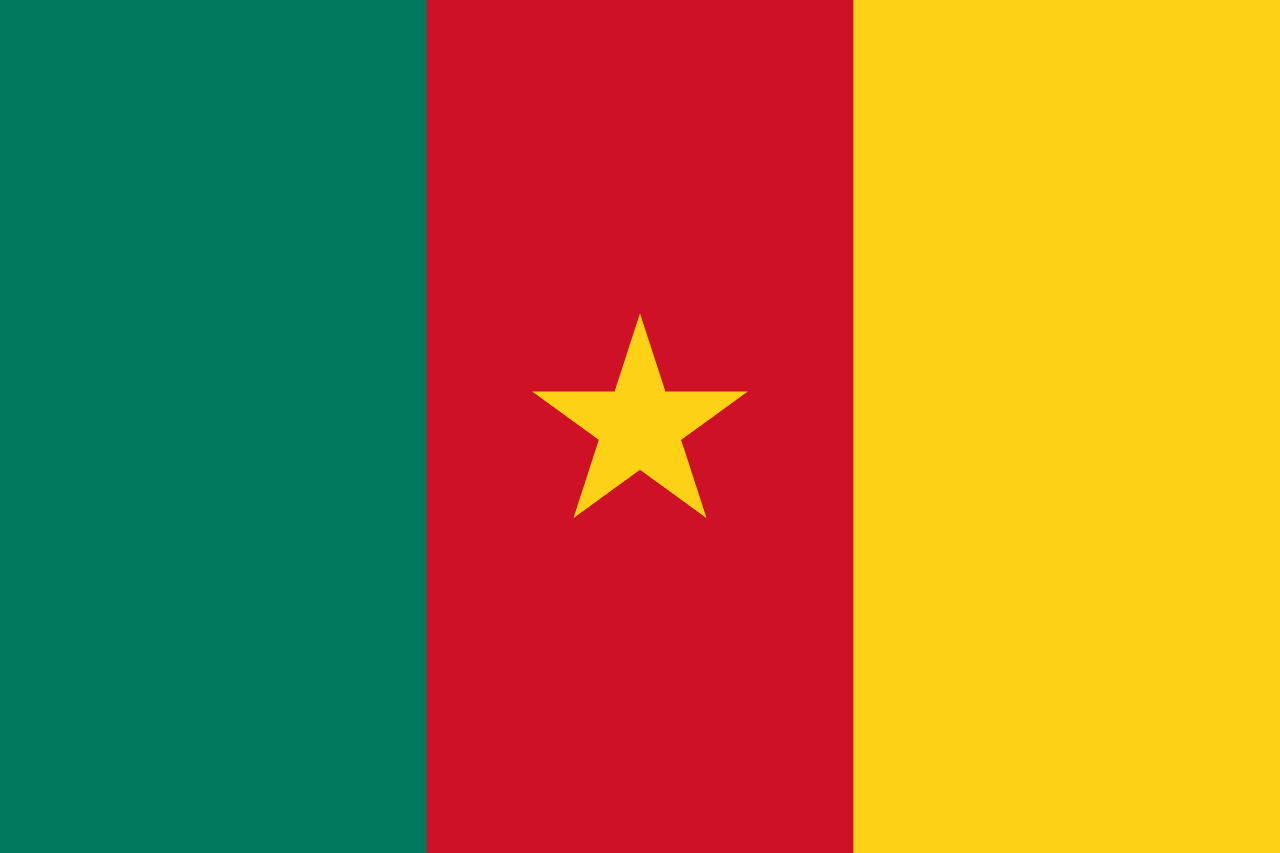
Cameroon
Africa
Three vertical stripes of green, red, and yellow with a yellow five-pointed star in the center of the red stripe, representing the forests, unity, the sun and savanna, and the unity of the diverse peoples of Cameroon.